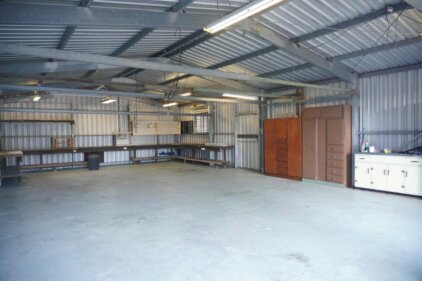Benefits of Sustainable Interior Design Practices
Embracing sustainable interior design offers a wealth of advantages that extend far beyond the aesthetic appeal of your home. Here are some of the key benefits you can expect:
- Reduced Environmental Impact: Sustainable design practices and materials help minimize the carbon footprint of your home, conserve natural resources, and promote a healthier ecosystem.
- Improved Indoor Air Quality: Many eco-friendly materials are free from harmful chemicals and toxins, ensuring a cleaner, safer indoor environment for you and your family.
- Enhanced Energy Efficiency: Sustainable design elements, such as energy-efficient appliances and strategic lighting, can significantly lower your energy consumption and utility bills.
- Increased Durability and Longevity: Eco-friendly materials often have a longer lifespan, reducing the need for frequent replacements and contributing to a more sustainable lifestyle.
- Positive Impact on Health: Sustainable design choices can have a positive impact on your physical and mental well-being, promoting a sense of wellness and connection with nature.
Eco-Friendly Materials for Sustainable Interior Design
When it comes to creating a greener home, the selection of materials plays a crucial role. Here are some eco-friendly options to consider for your sustainable interior design:
- Bamboo: A rapidly renewable resource, bamboo is a versatile material that can be used for flooring, furniture, and even cabinetry.
- Cork: Derived from the bark of cork oak trees, cork is a renewable, biodegradable, and highly durable material suitable for flooring, wall coverings, and insulation.
- Reclaimed Wood: Repurposing salvaged or reclaimed wood not only reduces waste but also adds unique character and history to your interior design.
- Natural Fibers: Materials like linen, hemp, and organic cotton are excellent choices for textiles, upholstery, and window treatments.
- Low-VOC Paints: Opt for paints and finishes that are low in volatile organic compounds (VOCs), which can negatively impact indoor air quality.
- Recycled Glass: Recycled glass can be used for countertops, tiles, and decorative elements, providing a sustainable and visually striking option.
- Soy-Based Foam: Soy-based foam is a renewable, biodegradable alternative to traditional petroleum-based foams used in furniture and bedding.
Incorporating Natural Lighting in Your Home
One of the cornerstones of sustainable interior design is the strategic use of natural lighting. By maximizing the amount of daylight that enters your home, you can reduce the need for artificial lighting, lower energy consumption, and create a more inviting and uplifting atmosphere.
To incorporate natural lighting, consider the following strategies:
- Install large windows, skylights, or sliding glass doors to allow ample natural light to flood your living spaces.
- Strategically place mirrors and light-colored surfaces to reflect and distribute natural light throughout the room.
- Incorporate sheer window treatments that allow light to pass through while still providing privacy.
- Arrange your furniture and decor to make the most of the available natural light, avoiding obstructions and shadows.
By harnessing the power of natural light, you can not only enhance the aesthetic appeal of your home but also contribute to its overall energy efficiency and sustainability.
Energy-Efficient Appliances and Fixtures
Sustainable interior design extends beyond the materials used; it also encompasses the selection of energy-efficient appliances and fixtures. By investing in these eco-friendly options, you can significantly reduce your home’s energy consumption and lower your utility bills.
When shopping for appliances and fixtures, look for the ENERGY STAR® certification, which indicates that the product meets strict energy-efficiency guidelines. Some examples of energy-efficient options include:
- High-efficiency refrigerators, washers, and dryers
- LED lighting fixtures
- Low-flow showerheads and faucets
- Programmable thermostats
- Energy-efficient windows and insulation
By incorporating these energy-saving elements into your home, you can not only reduce your carbon footprint but also enjoy long-term cost savings and a more comfortable, sustainable living environment.
Using Recycled and Upcycled Materials
Embracing the principles of a circular economy, sustainable interior design often involves the use of recycled and upcycled materials. These repurposed items not only add unique character to your home but also reduce waste and the demand for new resource extraction.
Some examples of recycled and upcycled materials you can incorporate into your interior design include:
- Reclaimed wood furniture and decor
- Repurposed glass bottles or jars as vases or lighting fixtures
- Upcycled textiles, such as clothing or fabrics, transformed into throw pillows or wall hangings
- Recycled metal or plastic objects used as decorative accents or functional pieces
By embracing the beauty and versatility of these sustainable materials, you can create a one-of-a-kind, eco-friendly living space that reflects your commitment to the environment.
Indoor Air Quality and Non-Toxic Materials
Sustainable interior design also prioritizes the health and well-being of the occupants by focusing on indoor air quality and the use of non-toxic materials. Many traditional building materials and furnishings can release harmful chemicals, known as volatile organic compounds (VOCs), into the air, negatively impacting respiratory health and overall indoor environmental quality.
To ensure a healthier indoor environment, opt for materials and products that are free from harmful chemicals, such as:
- Low-VOC paints, stains, and finishes
- Formaldehyde-free composite wood products
- Natural fiber textiles and upholstery
- Non-toxic cleaning products
- Live plants, which can help purify the air
By carefully selecting these non-toxic materials, you can create a sanctuary that nourishes your family’s well-being and supports a sustainable lifestyle.
Water Conservation and Sustainable Plumbing
Water conservation is another crucial aspect of sustainable interior design. By incorporating water-efficient fixtures and implementing sustainable plumbing practices, you can significantly reduce your home’s water consumption and contribute to the preservation of this vital natural resource.
Some strategies to consider for water conservation and sustainable plumbing include:
- Installing low-flow showerheads, faucets, and toilets
- Incorporating greywater systems to reuse water for landscape irrigation
- Selecting water-efficient appliances, such as front-loading washing machines
- Implementing rainwater harvesting systems to collect and store rainwater for outdoor use
By adopting these water-saving measures, you can not only reduce your environmental impact but also enjoy long-term cost savings on your utility bills.
Sustainable Flooring Options
The flooring in your home plays a significant role in the overall sustainability of your interior design. When selecting sustainable flooring options, consider the following eco-friendly alternatives:
- Bamboo: As mentioned earlier, bamboo is a rapidly renewable resource that offers a durable and visually appealing flooring solution.
- Cork: Cork flooring is a sustainable, comfortable, and naturally insulating option that can contribute to improved energy efficiency.
- Reclaimed Wood: Opting for reclaimed or salvaged wood flooring reduces waste and adds unique character to your living spaces.
- Linoleum: Made from natural materials like linseed oil, cork, and wood flour, linoleum is a biodegradable and long-lasting flooring choice.
- Wool Carpets: Wool is a renewable, biodegradable, and naturally stain-resistant material that can be used to create sustainable carpeting.
By carefully selecting these sustainable flooring options, you can create a beautiful, eco-friendly foundation for your home while minimizing your environmental impact.
Sustainable Furniture and Decor Choices
Furnishing and decorating your home with sustainable choices is another essential aspect of creating a greener living space. When sourcing furniture and decor, look for pieces made from renewable, recycled, or upcycled materials, such as:
- Solid wood furniture from responsibly managed forests
- Upholstered pieces with natural fiber fillings and organic fabrics
- Vintage or antique furniture that has been refinished or repurposed
- Decorative accents crafted from recycled glass, metal, or ceramic
Additionally, consider the longevity and versatility of the items you choose, as well as their ability to be repaired or repurposed in the future. By investing in high-quality, sustainable furnishings and decor, you can create a home that is both visually appealing and environmentally responsible.
Implementing a Waste Management System
Sustainable interior design also involves the implementation of a comprehensive waste management system within your home. This includes not only the proper disposal of household waste but also the recycling and composting of organic materials.
To establish an effective waste management system, consider the following steps:
- Implement Recycling: Ensure that you have designated bins or containers for sorting and collecting recyclable materials, such as paper, plastic, glass, and metal.
- Compost Organic Waste: Set up a compost bin or system to divert food scraps and other organic waste from landfills, turning them into nutrient-rich soil for your garden.
- Reduce Single-Use Plastics: Minimize the use of disposable plastic items in your home and opt for reusable alternatives, such as water bottles, food storage containers, and shopping bags.
- Donate or Repurpose: When decluttering or replacing items, consider donating gently used goods or finding creative ways to repurpose them within your home.
By establishing a comprehensive waste management system, you can significantly reduce the amount of waste your household generates and contribute to a more sustainable future.
Green Landscaping and Outdoor Design
Sustainable interior design extends beyond the walls of your home and into the outdoor living spaces. Incorporating green landscaping and eco-friendly outdoor design elements can further enhance the environmental impact of your home.
Some sustainable landscaping and outdoor design ideas include:
- Native and drought-tolerant plants that require minimal water and maintenance
- Permeable pavement or gravel for pathways and patios to reduce stormwater runoff
- Rainwater harvesting systems to collect and reuse water for irrigation
- Composting bins or worm farms to turn organic waste into nutrient-rich soil
- Solar-powered outdoor lighting and water features to reduce energy consumption
By integrating these sustainable outdoor design elements, you can create a harmonious, eco-friendly living environment that seamlessly connects your interior and exterior spaces.
Sustainable Interior Design Certifications and Labels
To ensure that your sustainable interior design choices are truly aligned with environmental best practices, it’s important to familiarize yourself with various certifications and labels that signify the sustainability of products and materials.
Some of the most recognized certifications and labels in the sustainable interior design industry include:
- LEED (Leadership in Energy and Environmental Design)
- FSC (Forest Stewardship Council) for responsibly sourced wood products
- Green Seal for environmentally-friendly cleaning products
- Cradle to Cradle for products designed with a circular economy in mind
- Energy Star for energy-efficient appliances and fixtures
By selecting products and materials with these certifications, you can have confidence that your sustainable interior design choices are making a meaningful impact on the environment.
Conclusion: Creating a Greener Home
As we’ve explored throughout this comprehensive guide, sustainable interior design is a powerful tool for creating a more eco-friendly and healthier living environment. By incorporating the principles and practices outlined here, you can transform your home into a sanctuary that nourishes both the planet and your well-being.





